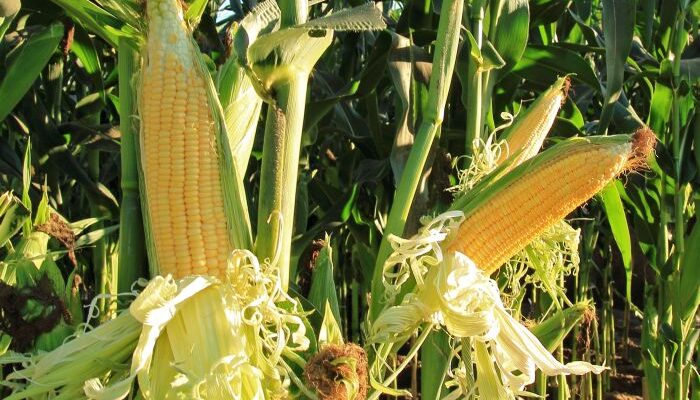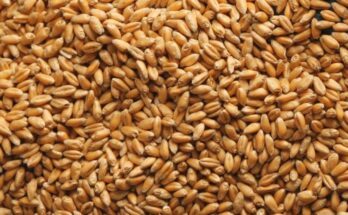India one of the world’s fastest-growing economies, confronts a significant challenge regarding its energy needs, which heavily rely on imported crude oil. This reliance leaves the country susceptible to price fluctuations and geopolitical tensions. Presently, more than 87 per cent of India’s crude oil is imported, placing strain on the economy as a whole and specifically on foreign exchange reserves. To mitigate this dependence, the growing momentum towards ethanol production as an alternative to crude oil to propel India towards a more sustainable future.
The National Biofuel Policy 2018 lays out a roadmap, aiming for a 20 per cent ethanol blend in petrol by 2025. While sugarcane has traditionally dominated ethanol production, maize is now emerging as a promising contender due to its higher yield potential. Initiatives like the Ethanol Blending Program (EBP) are further boosting interest in maize-based ethanol.
You may also like to read: APEDA facilitates visits of farmer producer organisations (FPOs) to UAE to unlock their export potential
Globally, the United States leads the ethanol production, generating 15,400 million gallons in 2022-23, mainly from corn. Brazil follows closely with 7,420 million gallons, primarily from sugarcane. The European Union trails in third place with 1,330 million gallons.
India, though a rising player in the biofuel arena, currently occupies the fourth position, producing 1,090 million gallons.
Economics of Ethanol Production (Sugarcane Vs Maize)
India, the world’s second-largest sugarcane producer at 434 million tonnes (MT), faces a significant hurdle: only 10 per cent of its production converts to ethanol. This limitation not only reduces ethanol output but also escalates production costs, with ethanol prices ranging from ₹42 to ₹50 per litre. Challenges related to land, labour, and water resources exacerbate these costs, posing threats to ethanol producers’ profitability and environmental sustainability concerns. However, the most critical impact is on food security.
India annually consumes approximately 29 MT of sugar, and the rising ethanol production could impact sugar consumption as sugarcane diverts to fuel production.
This diversion, aiming for 20 per cent blending by 2025, risks sugar price hikes and land use competition, jeopardizing sugar availability for millions. While sugarcane dominates, maize emerges as a challenger.
Maharashtra leads India’s sugar production with 29.47 per cent of the output, followed by Uttar Pradesh (27.29 per cent) and Karnataka (15.71 per cent), collectively accounting for 72.47 per cent.
You may also like to read: Around 5,000 farmer producer organisations (FPOs) get registered on ONDC platform
India produced 35.5 MT of maize in 2023-24, lower than sugarcane’s 434 MT, but maize yields more ethanol (15 per cent per tonne compared to sugarcane’s 10 per cent).
Maize consumption is primarily for feed (63 per cent), food (23 per cent), and starch (12 per cent). Ethanol production uses 2-3 per cent, poised for growth due to government initiatives and fuel demand.
Six states contribute over 70 per cent of India’s maize output: Karnataka (16.45 per cent), Madhya Pradesh (11.37 per cent), Maharashtra (10.91 per cent), Rajasthan (9.90 per cent), Bihar (8.90 per cent), and Uttar Pradesh (6.10 per cent).
While maize ethanol production is limited, it’s growing, with 3.5 MT diverted in 2022-23. The government aims to boost maize-based ethanol production from 5 MT by 2025 through the Ethanol Blending Program.
India’s ethanol production capacity is 1,380 crore litres, with 875 crore litres from molasses and 505 crore litres from grain. Despite sugarcane’s dominance, maize gains attention for its higher yields, lower costs, and environmental benefits.
Shifting Focus: Why Maize Might Be Preferred
Economically, maize offers efficiency with lower costs (₹38-42/litre vs. sugarcane’s ₹42-50) and higher ethanol yield (15 per cent per tonne vs. 10 per cent), maximising biofuel value. Existing infrastructure enables surplus beyond food needs.
Environmentally, maize boasts a smaller water footprint (half that of sugarcane), enhancing sustainability in water-stressed regions. Studies suggest lower greenhouse gas emissions, aligning with India’s climate goals.
Socially, maize diversifies agricultural income, empowering farmers and aiding rural development. This aligns to double farmers’ income and foster sustainable livelihoods.
Industry stakeholders recognise maize’s potential, with farmers benefitting from stable income and distilleries from higher yield and lower costs.
Policymakers see maize as vital for energy security and rural development, as evident in initiatives like the Ethanol Blending Program (EBP), supporting maize-based ethanol production.
India’s government introduces incentives to boost maize’s biofuel contribution and sustainability.
A. Subsidies
- Capital Investment: Subsidies of 20 per cent to 30 per cent are provided on capital investments for setting up maize-based ethanol plants, based on project location and capacity.
- Interest Subvention: Ethanol producers benefit from subsidised loans, reducing their financing costs (NABARD).
- Minimum Support Price (MSP): The government ensures a minimum purchase price for maize, encouraging cultivation and providing farmers with assured income.
- Tax Benefits: Maize ethanol enjoys excise duty exemption and concessional GST rates, enhancing its competitiveness against fossil fuels.
- Incentive: Oil marketing companies (OMCs) offer an additional Rs 5.79 per litre (Excluding GST) incentive for ethanol sourced from maize.
B. Policy Support
- Ethanol Blending Program (EBP): Mandating ethanol blending with petrol, aiming for 20 per cent by 2025, creates a guaranteed market for maize-based ethanol.
- National Biofuel Policy 2018: Outlines the government’s commitment to promoting biofuels, including specific targets for maize-based ethanol production.
Maize enriches India’s biofuel landscape, blending seamlessly with sugarcane due to its cost-effectiveness, water efficiency, and eco-friendliness. Government support and versatile varieties propel its expansion, while production enhancements are essential.
- Maize productivity is to be increased by adopting improved agronomical practices and regeneration of soil health.
- Intensification of maize-based cropping pattern.
- Development of climate-resistant varieties.
- The government supports research on improving maize varieties, ethanol production technologies, and sustainable practices.
(Abhay Dandwate is the Chief Risk Officer (CRO) & Head of Market Research Team and Jayesh Patel is a Sr. Analyst at National Bulk Handling Corporation (NBHC). Views expressed in the article are the authors’ own.)





